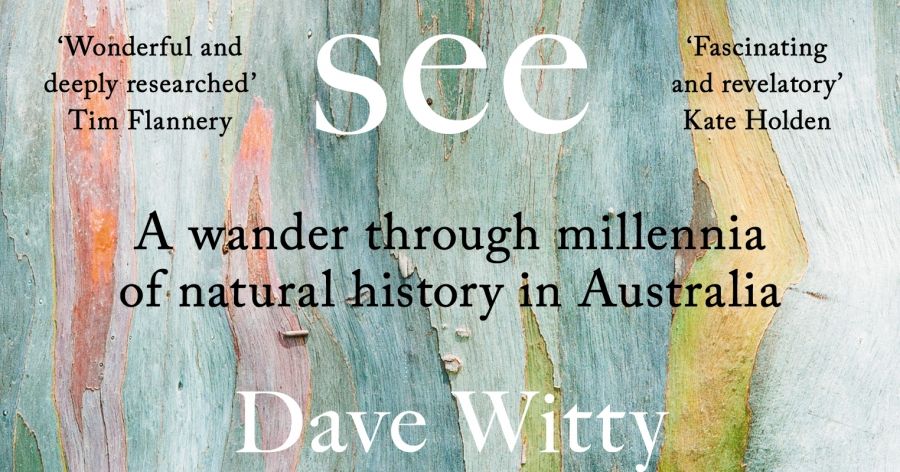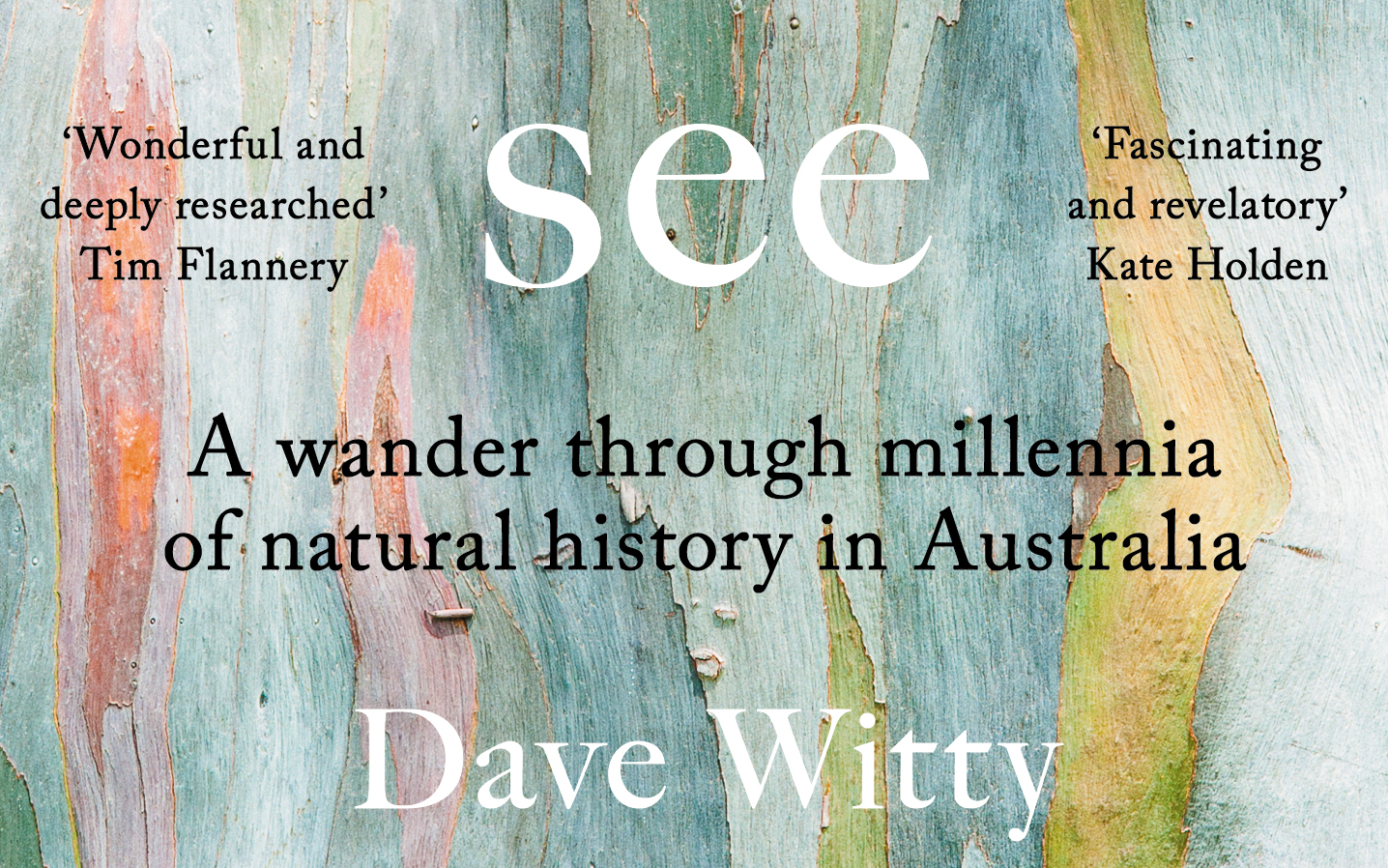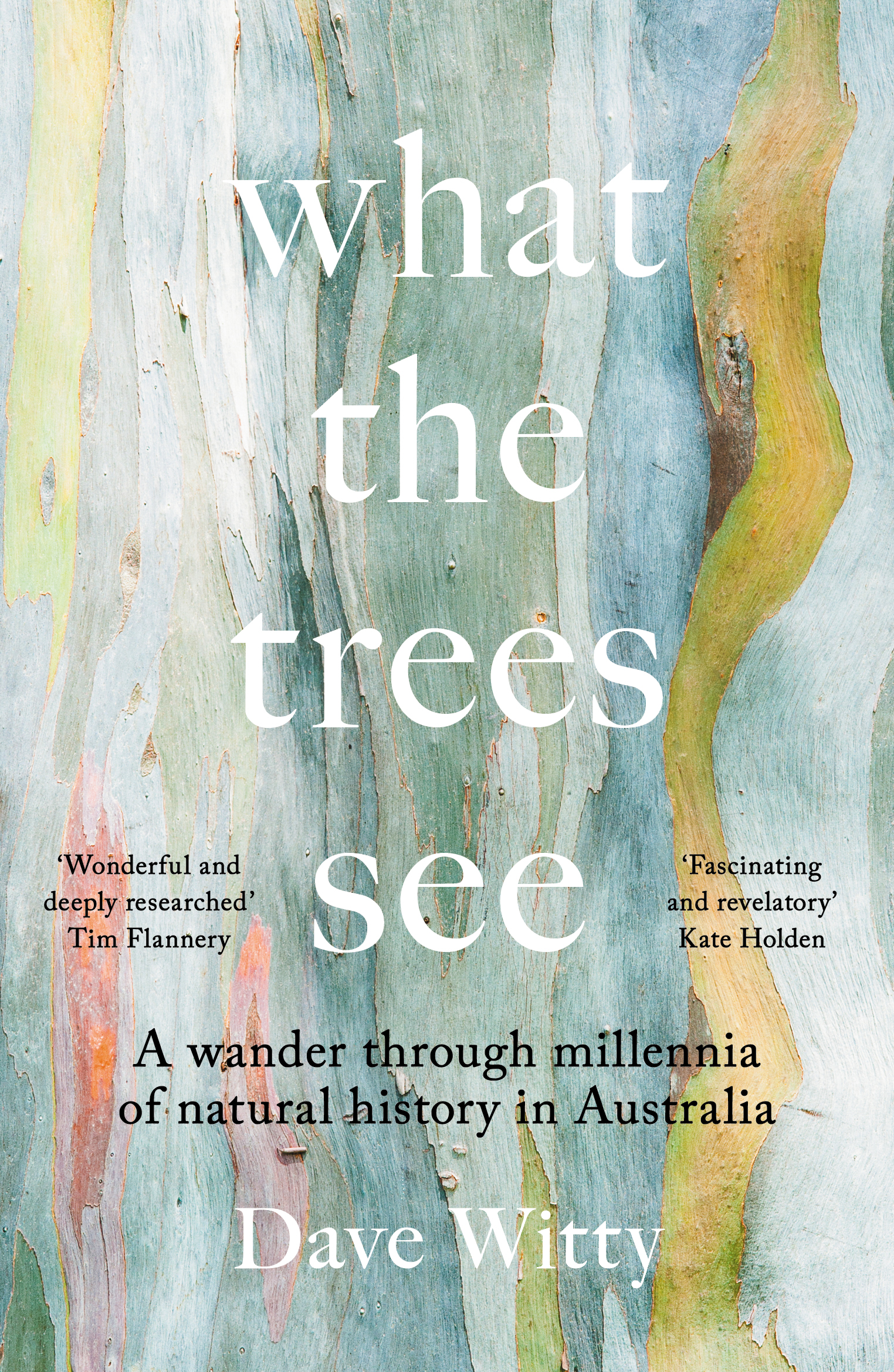
- Free Article: No
- Contents Category: Natural History
- Review Article: Yes
- Article Title: Trees as witnesses
- Article Subtitle: The pursuit of ancient trees
- Online Only: No
- Custom Highlight Text:
The photograph arrives while I am reading Dave Witty’s What the Trees See. A tree’s branch close-up, outer brown-red bark peeled back to smooth and brilliant green. A friend, spotting it on Quandamooka Country in Minjerribah, North Stradbroke Island, has been understandably stopped in her tracks. Framed intimately like this, its shape and textures suggest warm musculature: lean in, you will be held. This beautiful creature.
- Featured Image (400px * 250px):

- Alt Tag (Featured Image): Ashley Hay reviews ‘What the Trees See: A wander through millennia of natural history in Australia’ by Dave Witty
- Book 1 Title: What the Trees See
- Book 1 Subtitle: A wander through millennia of natural history in Australia
- Book 1 Biblio: Monash University Publishing, $29.99 pb, 288 pp
- Book 1 Cover Small (400 x 600):

- Book 1 Cover (800 x 1200):

To walk through Witty’s book is to make the similarly close-up acquaintance of certain Australian trees – individuals like Mackay’s Leichhardt Tree (a cheesewood); sometimes whole species’ systems, like the thousand kilometres of mangroves that died from dehydration in the Gulf of Carpentaria in 2015–16. More than four-fifths of Australian plants grow nowhere else, and some of Witty’s trees grow only in tiny pockets even here. This can protect them or narrow their options disastrously. Think the Wollemi Pine, whose dramatic discovery in 1994 – akin to ‘happening upon a Tyrannosaurus rex in an Arizona canyon’ – led to the worldwide export of nursery specimens, a twenty-first-century manifestation of the international flora trade sparked by the British occupation of Australia in 1788. Think the Neilsen Park she-oak: the last ten specimens on Sydney’s Harbour died in 2003, and it exists now only through new trees propagated from seeds collected before they died.
The book’s title comes from a conversation Witty has with a friend at the Ngargee tree, a red gum in St Kilda. Estimated to be three to five hundred years old, it hosted ceremonies prior to European settlement, and is ‘a symbol of the cultural heritage of the original Australians’, its plaque explains – in this case the Bunurong. ‘We walked up to its trunk and felt the coarseness of the bark,’ Witty writes:
We imagined the structures of modernity fading slowly before us, time playing out in reverse, open woodland recolonising the brash apartment blocks … My friend said, ‘Can you believe how much this tree must have seen?’
It is a powerful idea, particularly in landscapes so recently and comprehensively disrupted by colonisation. Those changes have been estimated differently. ‘We will never know for sure how much was open grassland and how much was forest,’ Witty writes. What is documented is that trees came down as soon as the First Fleet landed in Warrane, which they called Sydney Cove. In the context of the relationship between Australia’s First People and Country, it is important to acknowledge what that felling represents. Witty quotes Ngarigu scholar Jakelin Troy’s reminder to non-Indigenous Australians that trees are community members, ‘part of our mob’. Trees are not where ancestors live, says anthropologist Diana James. ‘They are those ancestors.’
Which makes more potent the idea of trees as witnesses, like the twinned forest red gums overlooking Sydney Harbour’s famous man-made views: Opera House, Harbour Bridge. They would have observed eleven British ships weighing anchor in early 1788 and everything that unfurled after that. They are that old.
There is a work by Julie Gough, the Tasmanian artist of Scottish-Irish-trawlwoolway heritage, called Witness – thirty-five films of extant and aged eucalypts in landscapes where acts of violence were committed. It calls for a vast reckoning and responsibility to read Australia’s landscapes this way. Witty’s book sometimes embraces this scale of vision, and sometimes folds into smaller, more personal stories. He hangs the collection from the boughs of his own life, his emigration from the United Kingdom with a partner, their various homes here, the sudden dissolution of that partnership, and his almost simultaneous awakening to the natural world. This begins what he calls ‘an obsession: the pursuit of ancient trees. In those initial few months after the break-up … a means to get through.’ Then comes a new partner who gifts him a notebook, whom he marries, and with whom he becomes a parent.
As an editor more than a reader, I wasn’t always sure about this device: the rich arc of stories the book shares felt more akin to a scale of vastness than a single life. But this is also a book of arrivals: Witty’s arrival in new places and new modes of being – emigrant, single man, husband, father, nature writer. He sees himself in a description of the British writer Bruce Chatwin, ‘an effete Pommy with baby-blue eyes, a plummy voice and a fancy notebook’. Learning the trees, he says, ‘gave me a connection to the land, an investment in the country’s future; at the same time it provided me with a purpose, an esoteric pursuit’. Marcel Proust is often his companion, a touchstone from the other side of the world for epiphanies and evocations here.
In the context of arrival, the experience of reading his ‘New Dreaming’ chapter – on this side of 14 October 2023 – is perhaps not what Witty imagined. The book would have been finished earlier last year, released after that gutting result. Perhaps this speaks to a critical role for nature writing as another prism through which settler-Australians can look squarely at this continent’s interconnecting past, present, and future, rather than imagining an often static and ahistorical idea of the current nation-state. It also underscores the need for care and respect around the language and generalisations that form a part of storytelling, and some sentences slip a little sometimes here, along with a few odd designations and assumptions of knowledge around people and locations.
Gems shine in Witty’s rich accretion of narrative, such as Summer Allen’s ‘Science of Awe’ project, which sought to demonstrate, in part, that acts of kindness are more frequent among people who spend time with eucalypts. People who had gazed at a stand of towering blue gums were more likely to reach down and retrieve accidentally dropped items for strangers than was the case with people who had gazed at tall buildings.
I look again at that Minjerribah tree; it resembles the close-up bark of this book’s cover. This is an image that speaks to more than beauty: it is also a reminder to look at both forest and tree – at the details of place, story, species, moment, as well as at the vast networks between everything. All of which, all the time, underscores interconnection – what exists and what is being lost as the Holocene unravels and collapses. As the British-born Ghanian poet Victoria Adukwei Bulley writes in ‘Air’: ‘Quiet as it’s kept / we help the trees to breathe too.’


Comments powered by CComment